
npj 2D Materials and Applications
metrics 2024
Connecting Researchers to the World of 2D Innovations
Introduction
npj 2D Materials and Applications is a premier, open-access journal within the NATURE PORTFOLIO, dedicated to advancing the knowledge and applications of two-dimensional materials. Launched in 2017 and published from the United Kingdom, this journal quickly established itself as a key resource in its field, holding the prestigious Q1 quartile ranking across multiple disciplines, including Chemistry, Condensed Matter Physics, and Materials Science. With an impressive focus on innovative research and interdisciplinary applicability, npj 2D Materials and Applications addresses the scientific community's need for rapid dissemination of cutting-edge findings, fostering collaboration, and inspiring new applications in mechanical engineering and materials science. Researchers, professionals, and students engaged in the study and development of two-dimensional materials will find this journal an invaluable asset, offering a platform for their contributions to a rapidly evolving and transformative area of research.
Metrics 2024
 -
- 9.10
9.10 10.80
10.80 -
-Metrics History
Rank 2024
IF (Web Of Science)
JCI (Web Of Science)
Quartile History
Similar Journals
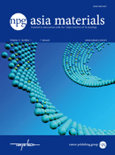
NPG Asia Materials
Transforming Knowledge into Applications in Materials ScienceNPG Asia Materials, a premier journal published by NATURE PORTFOLIO, stands at the forefront of research in the fields of condensed matter physics, materials science, and modeling and simulation. With an impressive Impact Factor gracing its Q1 rankings in 2023, this open-access journal, established in 2012, offers a vital platform for disseminating high-quality research articles, reviews, and perspectives that advance the understanding of material properties and innovative applications. Based in the United States and catering to a global audience, NPG Asia Materials features cutting-edge contributions that not only enhance academic scholarship but also provoke discussions relevant to both industry and academia. Researchers, professionals, and students are invited to explore its extensive archive of work, covering insights from 2009 to 2024, in a bid to stay abreast of the latest developments in these rapidly evolving scientific domains.

Journal of Ovonic Research
Illuminating the Future of Electronic and Optical Materials.Journal of Ovonic Research is a distinguished publication dedicated to advancing the fields of electronic, optical, and magnetic materials. Published by VIRTUAL CO PHYSICS SRL, this journal offers a platform for researchers to share innovative findings and developments that push the boundaries of technology and materials science. With an ISSN of 1842-2403 and an E-ISSN of 1584-9953, it provides an important service to the academic community, particularly within Romania and beyond. Despite its recent inception in 2011, the journal has gained traction in the academic landscape, reflecting a Q4 quartile ranking in crucial categories such as Electronic, Optical and Magnetic Materials, as well as in Physics and Astronomy. The Scopus rankings further underscore its positioning, ranking within the 25th to 37th percentile across various disciplines, making it a valuable resource for professionals and students alike. Although the journal currently operates on a non-open access basis, it remains committed to exploring the latest advancements in materials science, encouraging interdisciplinary collaboration and fostering a deeper understanding of surface, coating, and film technologies. As the field evolves, Journal of Ovonic Research stands as a beacon for scholarly communication, bridging the gap between research and practical application.

Digest Journal of Nanomaterials and Biostructures
Unveiling Breakthroughs in Nanotechnology and Material ScienceThe Digest Journal of Nanomaterials and Biostructures, published by VIRTUAL CO PHYSICS SRL, is a premier open-access journal since 2006, focusing on the dynamic intersections of nanotechnology, biostructures, and material science. Based in Romania, this journal caters to a diverse readership of researchers, professionals, and students in fields such as nanoscience, biomedical engineering, and condensed matter physics. Despite its current Q4 ranking in multiple categories, including Atomic and Molecular Physics and Structural Biology, the journal serves as a valuable platform for disseminating innovative research and fostering collaboration across scientific disciplines. The journal’s commitment to open access ensures that groundbreaking findings in nanomaterials are readily available to a global audience, reflecting the increasing importance of interdisciplinary research in addressing contemporary challenges. With its ongoing evolution and the potential for high-impact contributions to the scientific community, Digest Journal of Nanomaterials and Biostructures plays a crucial role in advancing knowledge and innovation in its respective fields.

Materials Chemistry Frontiers
Advancing Innovations in Materials ChemistryMaterials Chemistry Frontiers, published by the esteemed Royal Society of Chemistry, stands as a leading journal in the realm of materials science and chemistry, with an impressive Q1 ranking in both Materials Chemistry and Materials Science categories as of 2023. This open-access journal, operating from the United Kingdom, offers a platform for researchers, professionals, and students to disseminate high-quality, impactful research. With its E-ISSN 2052-1537, the journal is dedicated to publishing cutting-edge articles, reviews, and research communications that explore innovative materials and their applications, fostering a comprehensive understanding of the complex interplay between materials and their chemical properties. With consistent rankings in the Scopus metrics, being positioned at the 25th percentile among 317 in the Materials Chemistry category, it highlights its pivotal role in advancing the field. The journal thrives on contributions that broaden the scope of knowledge from 2017 to 2024 and beyond, solidifying its status as an essential resource for contemporary research in materials science.
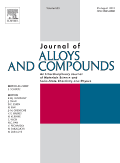
Journal of Alloys and Compounds
Exploring Breakthroughs in Metallurgy and Materials ScienceJournal of Alloys and Compounds, published by Elsevier Science SA, stands at the forefront of materials research, focusing on the properties, applications, and innovations within alloys and compounds. With an impressive impact factor and prestigious rankings placing it in the Q1 quartile across multiple related categories—including Materials Chemistry, Mechanical Engineering, and Mechanics of Materials—this journal is recognized for its significant contributions to the field. Researchers and professionals engaged in metallurgy, materials science, and engineering will find it a critical resource that encompasses groundbreaking studies, insightful reviews, and essential findings. The journal has a strong influence, as evidenced by its Scopus rankings—ranking 14th in Metals and Alloys and 28th in Mechanics of Materials, indicating a robust global impact. As it continues to publish cutting-edge research from 1991 to 2024, the Journal of Alloys and Compounds serves as a vital platform for the exchange of knowledge, thereby advancing our understanding of complex materials and fostering innovation in diverse applications.
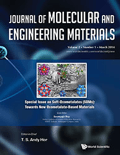
Journal of Molecular and Engineering Materials
Transforming Research into Revolutionary Material SolutionsThe Journal of Molecular and Engineering Materials, published by World Scientific Publishing Co Pte Ltd, is a leading peer-reviewed journal that focuses on the intricate relationship between molecular science and engineering practices. With the ISSN 2251-2373 and E-ISSN 2251-2381, this journal aims to foster the exchange of cutting-edge research and developments within the fields of materials science, molecular engineering, and related applications. Although the journal currently does not operate under an Open Access model, it remains a vital resource for researchers, professionals, and students seeking in-depth knowledge and innovative methodologies in material design and engineering. The journal's esteemed reputation is reflected in its commitment to publishing high-quality research that addresses contemporary challenges and opportunities in material science, thereby contributing to advancements in technology and industry.

C-Journal of Carbon Research
Unveiling the Future of Carbon Science and SustainabilityC-Journal of Carbon Research is an innovative and dynamic journal published by MDPI, situated in the picturesque city of Basel, Switzerland. Launched in 2015 and operating under an Open Access model, the journal aims to promote the dissemination of high-quality research related to carbon science, environmental sustainability, and renewable resources. With a current impact factor reflecting its growing influence in the field, the journal's standing is bolstered by its Scopus ranking, placing it in the 37th percentile in the Environmental Science category. It offers a platform for researchers, professionals, and students alike to engage with cutting-edge studies, reviews, and discussions that contribute to environmental science advancements. As the journal continues its convergence journey from 2022 to 2024, it remains committed to fostering scholarly exchange and interdisciplinary collaboration on pressing carbon-related challenges.
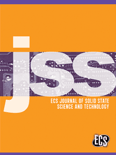
ECS Journal of Solid State Science and Technology
Unlocking the Potential of Solid State InnovationsECS Journal of Solid State Science and Technology, published by the Electrochemical Society, is a prominent journal dedicated to the advancement of research in the field of electronic, optical, and magnetic materials. With an ISSN of 2162-8769 and an E-ISSN of 2162-8777, this journal has established a significant presence since its inception in 2012, spanning critical developments in solid-state science that are essential for innovative technologies. Operating within the United States and recognized for its global outreach, it holds a respectable Q3 category ranking in the materials science category as of 2023, reflecting its commitment to high-quality research and its role in bridging theoretical and applied aspects of materials science. Researchers, professionals, and students alike will find vital information and cutting-edge studies that further the understanding and applications of solid-state technologies. The journal is accessible to an extensive audience, making it an invaluable resource for those engaged in the ever-evolving landscape of materials science.

APPLIED PHYSICS A-MATERIALS SCIENCE & PROCESSING
Unveiling Cutting-edge Discoveries in Applied PhysicsApplied Physics A: Materials Science & Processing, published by Springer Heidelberg, is an esteemed academic journal that has been at the forefront of innovative research since its establishment in 1995. With a strong focus on the intersection of physics, materials science, and engineering, this journal explores cutting-edge developments and applications that influence contemporary materials research. Categorized in the Q2 quartile across both Chemistry and Materials Science, it boasts respectable rankings in Scopus, affirming its influence and reach within the academic community. Although primarily a subscription-based journal, it is dedicated to disseminating high-quality research findings that advance our understanding in these fields. Researchers, professionals, and students alike can benefit from the journal's commitment to publishing comprehensive studies, methodological advancements, and insightful reviews that push the boundaries of knowledge in materials science.
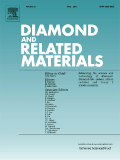
DIAMOND AND RELATED MATERIALS
Connecting theory with application in diamond research.DIAMOND AND RELATED MATERIALS, published by Elsevier Science SA, serves as a premier international platform for the dissemination of high-quality research in the fields of materials science, electrical engineering, and chemistry, with a specialized focus on diamond and its related materials. With an ISSN of 0925-9635 and an E-ISSN of 1879-0062, this journal has established itself within the top quartiles, reflecting its influential contribution to the scientific community, particularly in the categories of Chemistry (miscellaneous) and Electrical Engineering, among others. The journal's wide scope encompasses both theoretical and applied aspects of diamond research, making it an essential resource for professionals and academics alike. The current rankings position it favorably within its respective disciplines, with a notable 79th percentile in General Physics and Astronomy and strong standings in related categories. Although it does not offer open access, researchers can stay informed of cutting-edge advancements and methodologies through its comprehensive articles and reviews, enriching the wider discourse in advanced materials research.